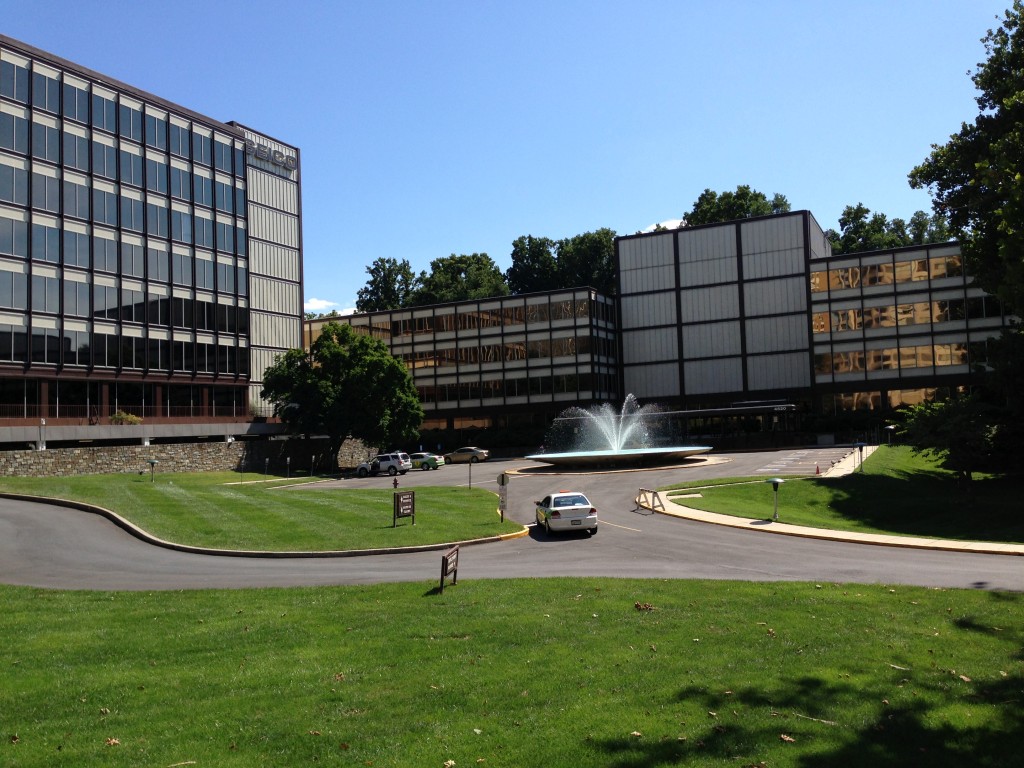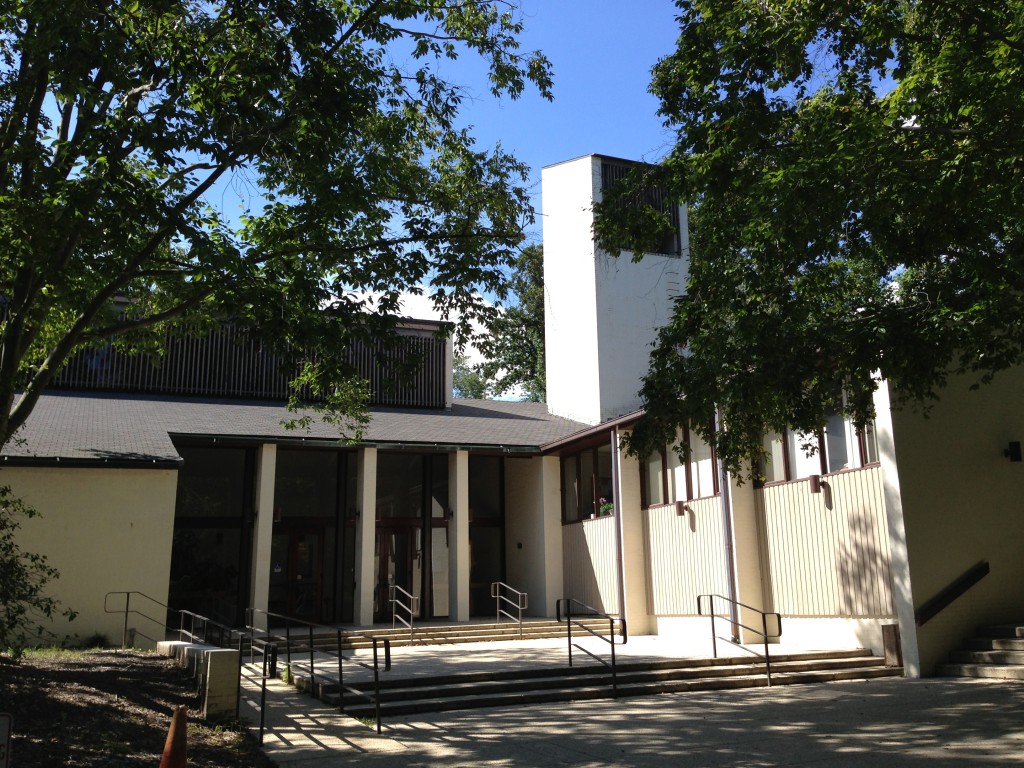This past Saturday, the Montgomery County Planning Department and the Potomac Chapter of the American Institute of Architects participated in the nationwide docomomo event by sponsoring a tour of some of Montgomery County’s mid-century modern buildings.
The tour began at GEICO, where the soft, sweeping lines of the Victor Kling campus contrast with the rectilinear facades and composition of buildings. Across the street, The Irene apartment building displays the same rectilinear façade patterns. The neighborhoods of Potomac Overlook and Glen Echo Heights tucked their glass-walled homes amid the natural landscape, capturing views and light.
Many tour-goers thought the highlight was a visit to the Seymour Krieger House, designed by internationally recognized architect, Marcel Breuer. Breuer’s work on this house, delicately placed on its site, contrasts with his most notable buildings, the HUD headquarters in downtown Washington and the Whitney Museum in New York City.
The tour continued with lunch at the River Road Unitarian Church, designed by Keyes, Lethbrdige & Condon, a local firm that was instrumental in bring modern design to the Washington region.
Keyes, Lethbridge & Condon also designed the houses in Carderock Springs, a neighborhood listed on the National Register for its natural landscape, and unified design aesthetic.
All of the buildings—residential, commercial, and institutional—share the modernist approach to building: an emphasis on space rather than mass, balance rather than symmetry. In the Washington region, many of these post-war buildings were built in the suburbs. New open-plan homes were designed for servant-less households, filled with light, and placed in un-manicured landscapes. For businesses and institutions, modernist architecture conveyed an up-to-date attitude. They are emblematic of suburbanization in the post-war era and their siting and architectural elements influenced buildings of the time.
It’s too easy to relegate history to the distant past, but it is often the resources right around the corner that are overlooked. The Department of the Interior has wisely set up guidelines to allow buildings at least 50 years old to be considered historic. For those of us eligible for AARP membership, that can be hard to take, but don’t we all want to be appreciated for our fine lines and elegant posture?
We were grateful for the beautiful weather; and thankful to our partner, AIA Potomac Valley ; our sponsor Konst for their generous support; our enthusiastic tour-goers; and our gracious hosts.

